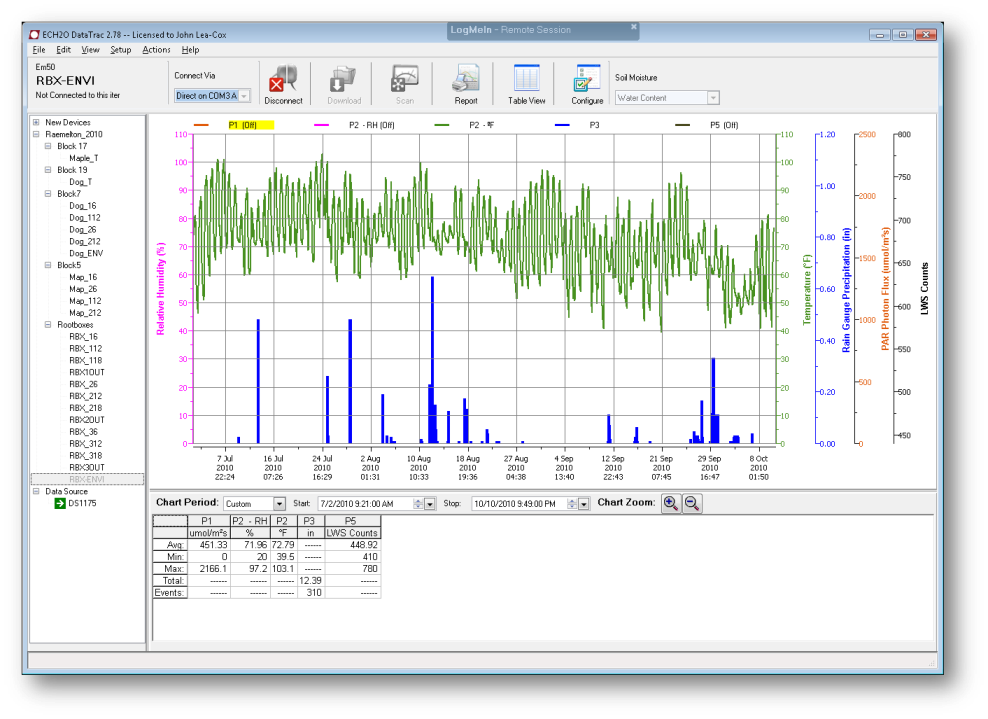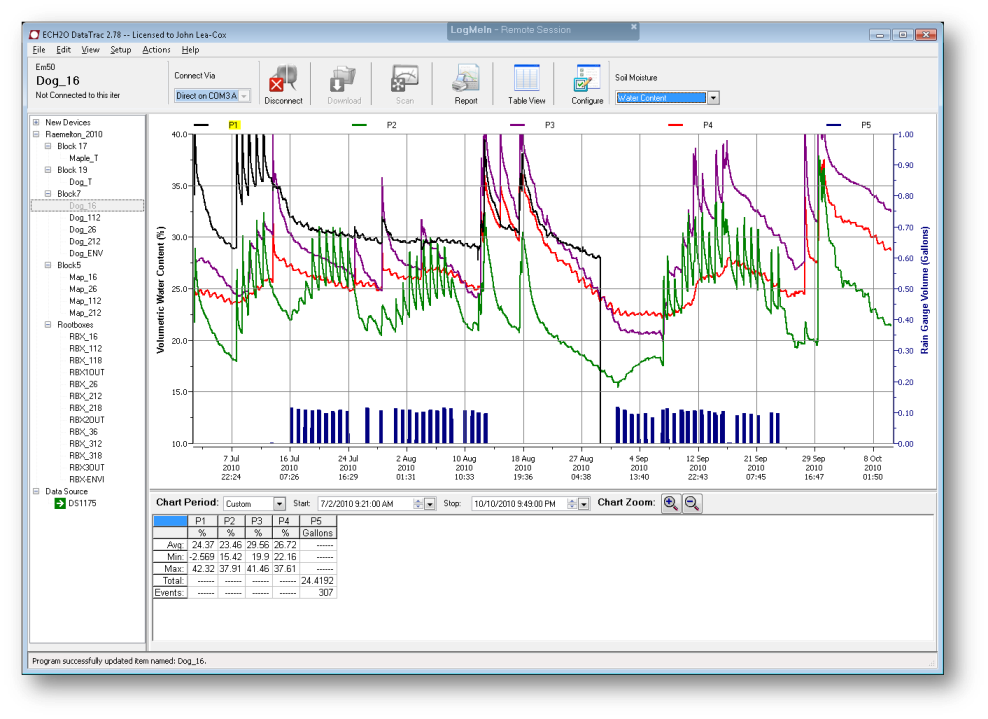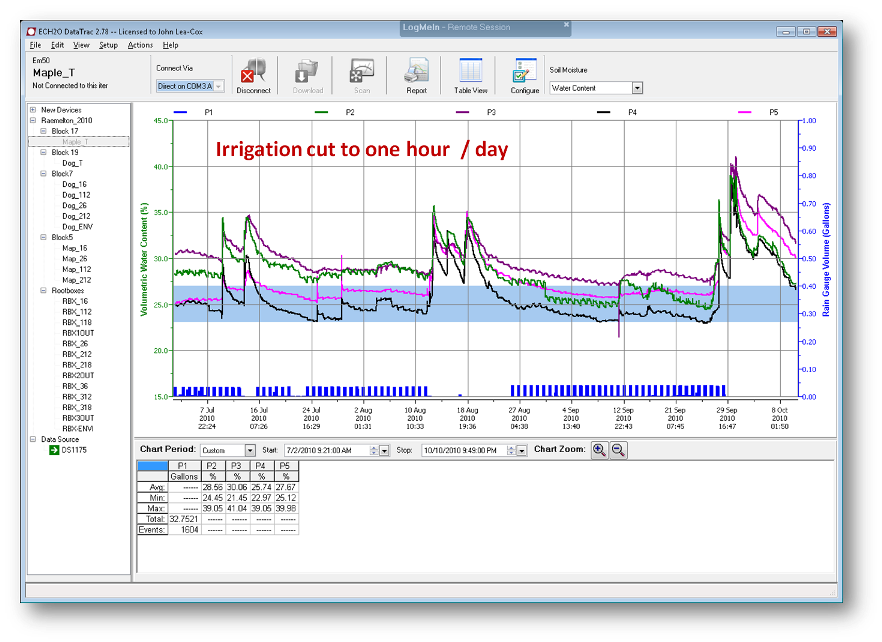You are here
Results
 2010 Rainfall and soil temperature data for Raemelton Farm.
2010 Rainfall and soil temperature data for Raemelton Farm.2010 was a drought year, with just 12.4” inches of rain between July and September. Consequently, with a high irrigation water demand, scheduling irrigations was a challenge.
Based on data analyzed from the root box study gathered during Fall 2009, it was determined that 4 short cyclic irrigations per day provided more lateral water movement in the soil profile than 2 longer irrigations of the same volume.
Newly transplanted blocks are the most important priority for irrigation during any year for a number of reasons. Thus, in times of water shortages, transplants typically received at least 2 hours of water per day.
With this sensor network providing real-time soil moisture data (Figure at left, below) from these transplant blocks, Steve Black was able to maintain his target root zone moisture content with only 1 hour of irrigation per day.
He could then reallocate this water to another 10-acre block of trees (Figure at right, below).

2010 Dogwood Block soil moisture data at 6” depth
Irrigation volumes indicated by blue bars. Increases in soil moisture at other times are due to rainfall events (see rainfall data above).
If irrigation water had not been available, these trees would not have been irrigated, likely causing a reduction in growth during 2010 and most likely longer production times.

2010 Maple Transplant Block Sensor Data
As the sensors provided precise soil moisture and irrigation application information during the season in these transplant blocks (Figure above), Mr. Black was able to maintain his target root zone moisture content (Blue horizontal bar) from 23-27% VWC with only 1 hour of irrigation per day.
